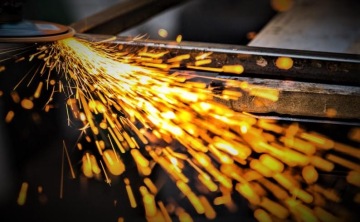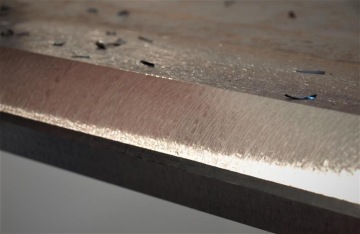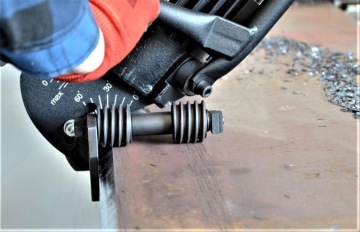Bevelling: grinding vs hand milling
In general, grinding for beveling is a machining process that involves the removal of material using a hard abrasive, such as a grinding wheel. While this method is widely used, it is considerably more time-consuming compared to the milling method. For instance, creating a 10mm chamfer with a hand-held milling chamferer can be accomplished in 1 to 2 minutes, whereas using a grinder for the same chamfer would take 15 to 25 minutes.
Furthermore, grinding tends to be geometrically imprecise, making it challenging to achieve the desired angle and edge width accurately compared to milling.
It is also crucial to mention the quantity and form of waste generated during grinding. This method produces a significant amount of metal dust, which poses a major drawback as it easily disperses into the surrounding environment, including nearby machinery and can even be inhaled into the lungs. In contrast, milling generates larger metal chips as waste, which are not as prone to inhalation, are easier to clean up compared to grinding dust, and can be recycled.
Bevelling (by hand machine) | Bevelling (by grinding) | |
|---|---|---|
Working speed (10mm chamfer) | 1 meter in 1-2 minutes | 1 meter in 15-25 minutes |
Angle Accuracy | Highly accurate | Inaccurate |
Dimensional accuracy | Highly accurate | Inaccurate |
Waste | Metal fragments | Metal dust |
Principle of material removal | Cutting inserts | Grinding abrasive |
Economics of operation | Suitable for regular work of approximately 5 meters or more per week | Suitable for infrequent and one-off work |
Weight | Comparable | Comparable |


